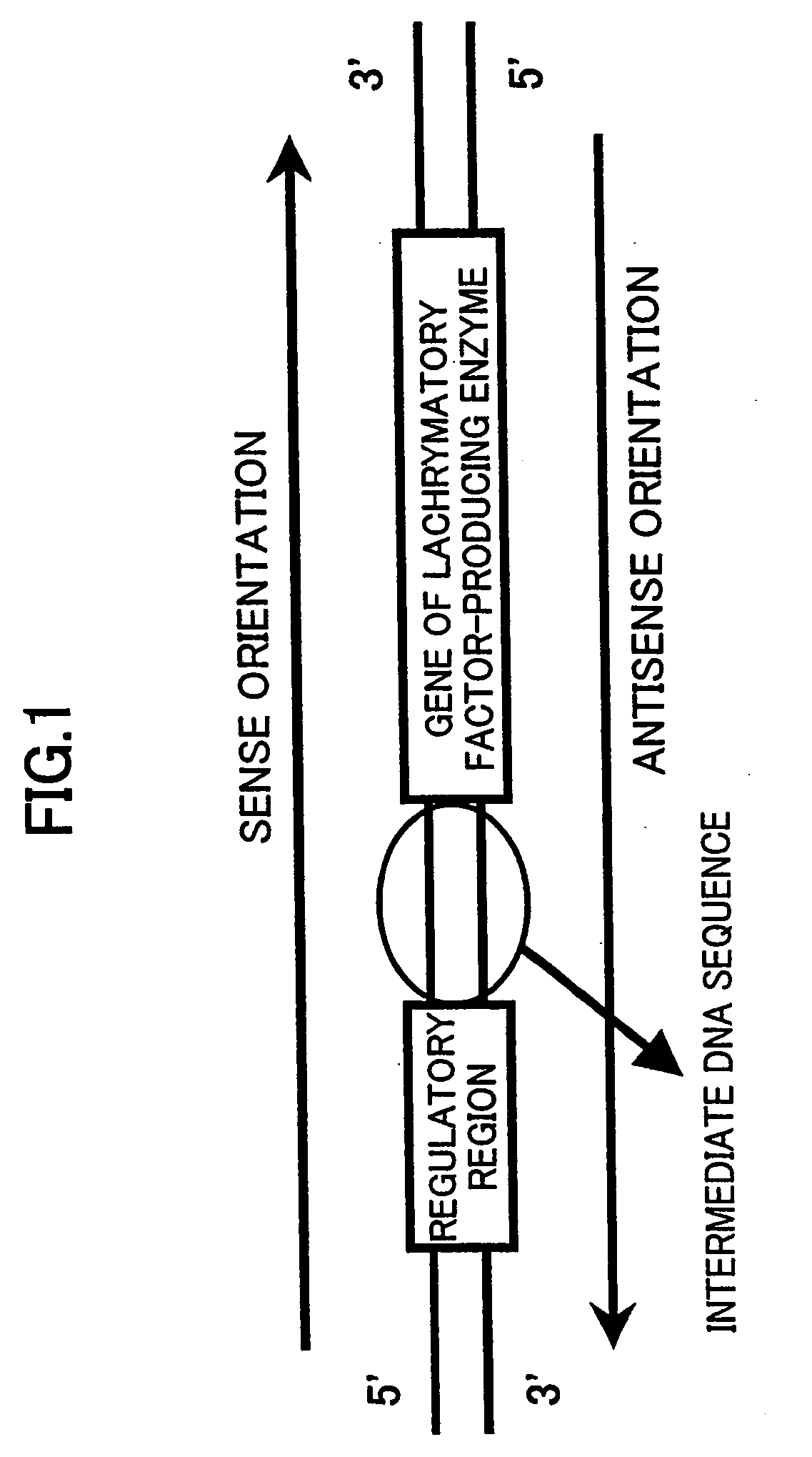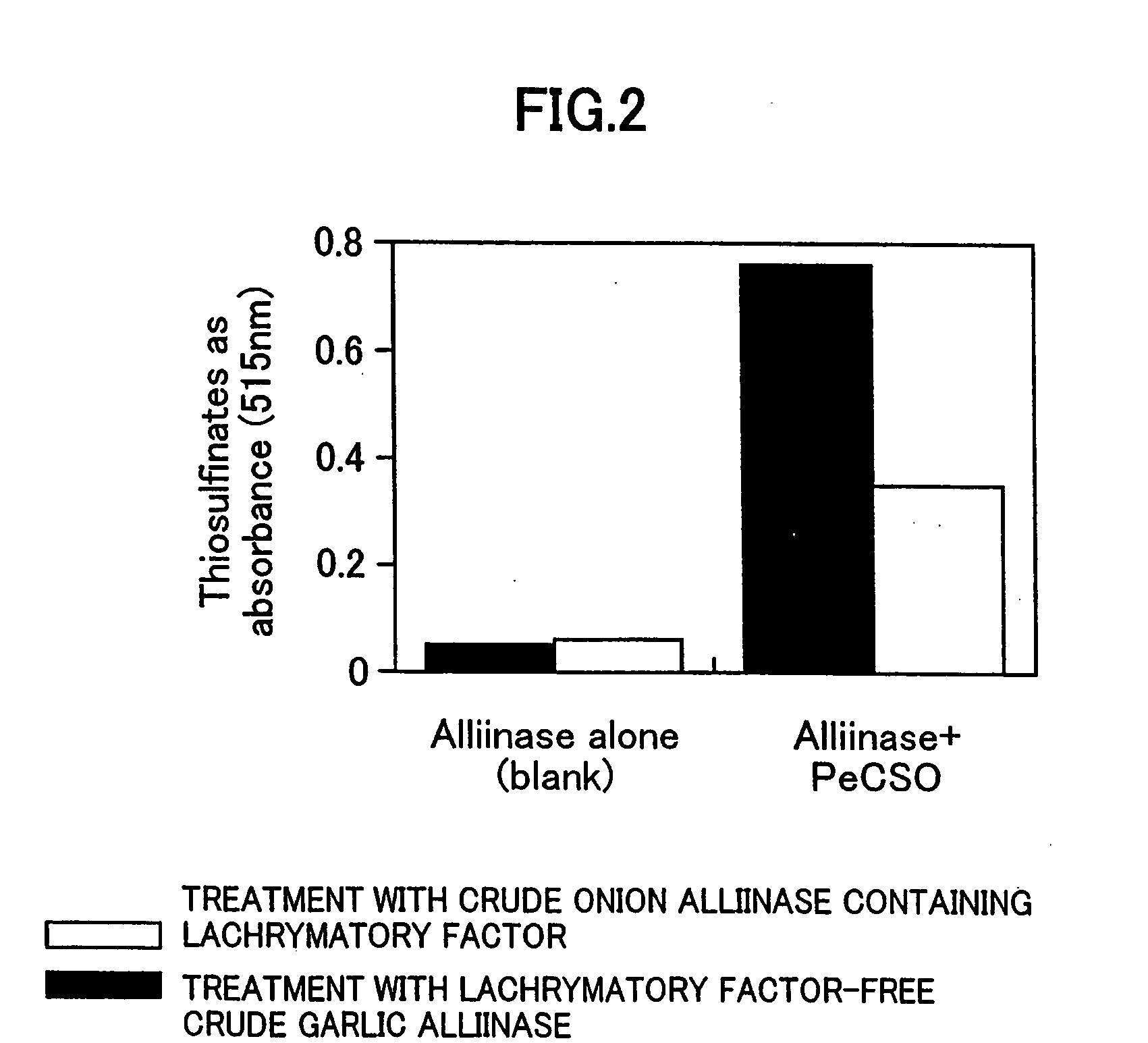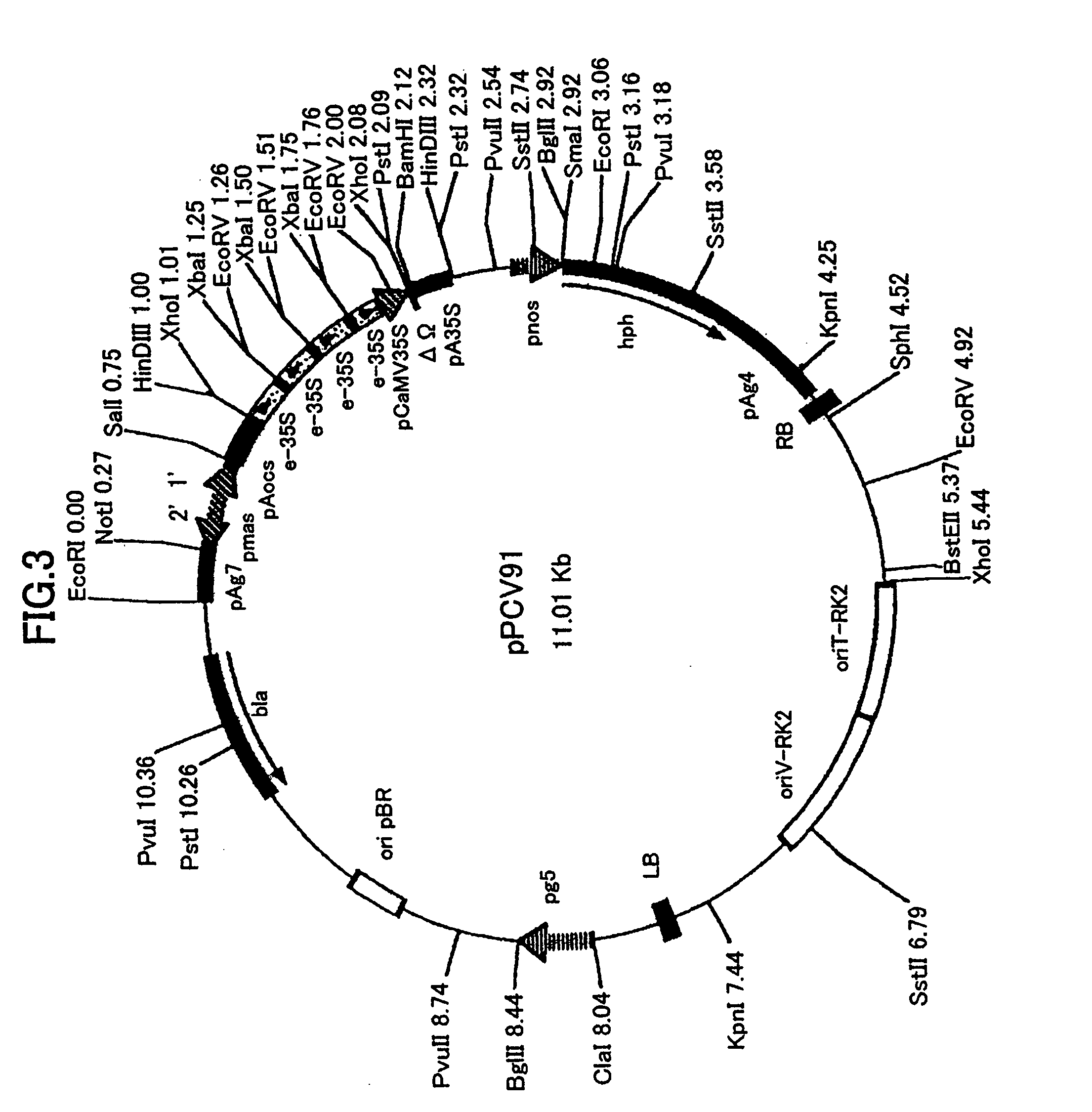DNA and vector for repressing expression of gene of lachrymatory factor-producing enzyme, method for repressing expression of gene of lachrymatory factor-producing enzyme with them and vegetables having repressed expression of gene of lachrymatory factor-producing enzyme
- Summary
- Abstract
- Description
- Claims
- Application Information
AI Technical Summary
Benefits of technology
Problems solved by technology
Method used
Image
Examples
example 1
[0126] (1) Preparation of Cultured Callus Sample
[0127] i. Varieties of Onion
[0128] Sen-shyuu-chu-kodakaki onion produced in Japan was selected as the sample.
[0129] (ii) Induction of Onion Callus
[0130] Full-ripe seeds of onion were surface-sterilized by immersing the seeds in 70% ethanol for 10 minutes and then in a sodium hypochlorite solution having an effective chlorine concentration of 3.3% for 20 minutes and then implanted in a callus induction medium (inorganic salts of MS and vitamins (Murashige, T. & Skoog, F., 1962; Physiol. Plant., 15, 473497), 50 μM fluorophenoxyacetic acid, 1 μM 2-isopentenyladenine, 0.1 M sucrose, 1 g / l casein hydrolyzate, 10 mM N-morpholinoethanesulfonic acid and 2 g / l gellan gum, pH 5.8). After the culture under irradiation with a fluorescent light of 1000 lux at 25° C. for 2 or 3 months, a callus from germinated primary root was obtained. N-Morpholinoethanesulfonic acid added to the callus induction medium was a reagent capable of keeping pH of th...
example 2
[0155] A re-differentiated vegetable S obtained from onion callus cocultured with LBA4404(pBIsense) and resistant to hygromycin and also a re-differentiated vegetable A obtained from onion callus cocultured with LBA4404(pBIantisense) and resistant to hygromycin were analyzed as follows:
[0156] (1) Analysis of Gene Introduced into Transformed Re-Differentiated Vegetable Body
[0157] PCR method was conducted to examine whether an intended gene had been introduced into a re-differentiated vegetable body obtained by the selection with hygromycin or not.
[0158] (i) Extraction of DNA from Re-Differentiated Vegetable Body Resistant to Hygromycin
[0159] Leaves of re-differentiated vegetable body resistant to hygromycin were used as the starting material. DNA was extracted from the leaves with DNeasy Plant Mini Kit (a product of QIAGEN Co.) according to the instruction of DNeasy Plant Mini Kit Handbook attached to the kit.
[0160] (ii) Primers for the Detection
[0161] A combination of the foll...
PUM
| Property | Measurement | Unit |
|---|---|---|
| Content | aaaaa | aaaaa |
Abstract
Description
Claims
Application Information
 Login to View More
Login to View More - R&D
- Intellectual Property
- Life Sciences
- Materials
- Tech Scout
- Unparalleled Data Quality
- Higher Quality Content
- 60% Fewer Hallucinations
Browse by: Latest US Patents, China's latest patents, Technical Efficacy Thesaurus, Application Domain, Technology Topic, Popular Technical Reports.
© 2025 PatSnap. All rights reserved.Legal|Privacy policy|Modern Slavery Act Transparency Statement|Sitemap|About US| Contact US: help@patsnap.com



